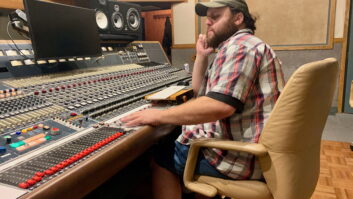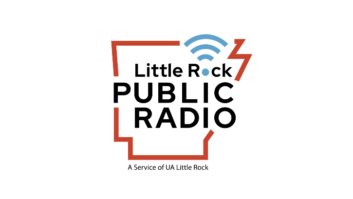The poet in me (and our illustrious editor knows I am a poet at heart) cries out that I first tell you that in ancient times, folks believed that quartz crystals were eternal ice sent by the heavenly gods.
In the late 1500s, the cognoscenti dismissed the poets and stated that these stones were actually fossilized ice. Score one for the poets. First with the most imaginative.
In present-day parlance, etymologists believe that quartz comes to us from the German, as much of the early work was done in central Europe, and crystal from the Greek for ice. Okay, both the poets and the cognoscenti got that part of it right.
Quartz crystal is a mineral, one of the most abundant in the earth’s continental crust, composed of silicon and oxygen (SiO2).
Putting the poetry and the beauty of these gems aside, quartz crystals have a unique quality useful to engineers and especially communications engineers: the piezoelectric effect.
The Curie brothers were an extraordinary pair who through their love and knowledge of math and physics were first to recognize in about 1880 that when pressure was applied to a body, in this case quartz, electricity was generated. The piezo portion of piezoelectric is a western bastardization of piezein, from the Greek for “squeeze.”
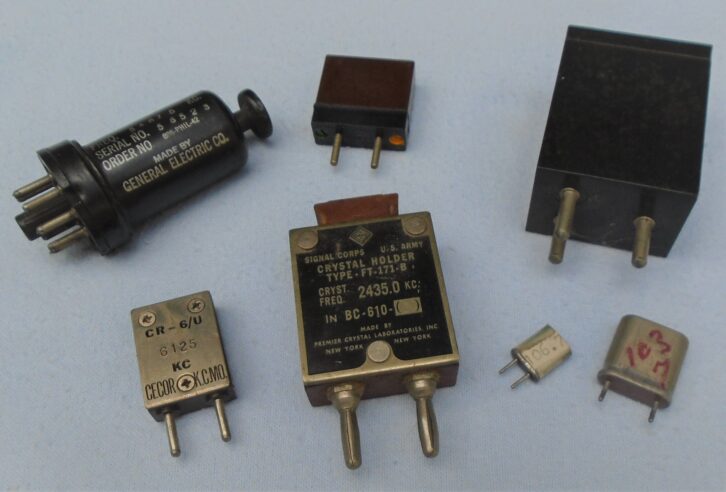
Shortly thereafter, a contemporary mathematician, Gabriel Lippman, postulated that there should be a converse piezoelectric effect, whereby applying an electric field to a crystal should cause that material to deform in response. Stimulated by this inverse phenomenon concept, the Curies quickly confirmed that Gabriel was correct.
With the emergence of the electronic era, we had better test and analysis gear to investigate, and in the 1920s, we are able to identify that certain crystal sections have a resonant aspect, electrically mimicking a series LC (inductor–capacitor) combination.
In the 1930s, broadcasting, communications in general and especially the military* really got going on crystals. The problem this substance could solve … getting things exactly on-frequency … was real and the solution critical if radio was to advance and expand.
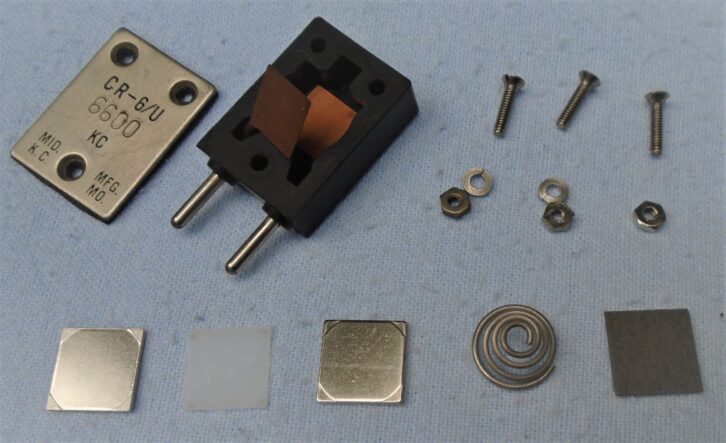
In a crystal, this action is a combination physical and electrical event. Reviewing the early, purist form of this technology, to optimize the effect, the first step was to select the coarse material in its natural form (basically a rock, which is where the vernacular slang of “rock” for a crystal comes from).
Next would come the mechanical preparation where the rock would be cut along the appropriate and/or ideal axis, sliced into “blanks,” the surface roughly prepared (tapering the delicate blank edges is a technology in itself), and finally a check of its resonant frequency.
From a lower frequency, the crystal is ground down (gross error) or acid etched (fine error) until the desired frequency of operation is reached.
As this resonant phenomenon is repeatable and stable over time, a properly utilized crystal can be the basis of a frequency standard.
Working within the limitations of the industrial mechanical tools available during the first half of the 1900s, the crystal blanks started out to be physically quite large, placing a practical limit on the highest frequency that would be stable. The top of the AM dial (1500 kHz in1930) was well within reach, and in 1926, AT&T’s WEAF in New York City became the first radio station in the United States to control its frequency with a quartz crystal unit.
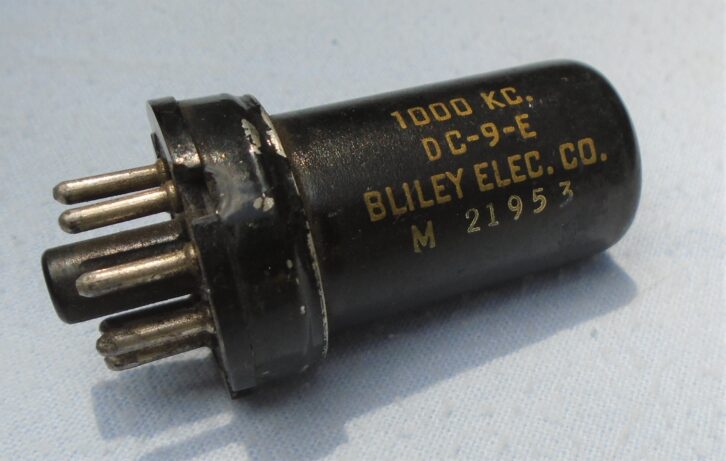
This pseudo resonant effect finds many uses and solves many problems including bandpass filters, etc., but our industry’s greatest use is in oscillators.
An oscillator is basically an amplifier with sufficient feedback to find and settle at its resonant (maximum gain) point, hopefully developing a single frequency output. The crystal is introduced into that feedback path as the controlling element, and with proper attention to current flow, temperature, loading, stray capacitance etc., that crystal will begin to physically vibrate, and when it achieves its natural resonance will be passing the maximum current, bringing the oscillator to the intended frequency … reliably, stably, continuously.
By their very nature, crystals are brittle and can be damaged by physical impact or destructive impressed current. Early broadcast crystals for that reason were well supported, quite often in glass enclosures that were expensive and hence needed a little showoff presentation.
During the AM domination period when the ±20 Hz frequency tolerance standard came in, the crystal also had to be maintained in a temperature-controlled, heated environment to enhance its stability even more to keep it inside that ±20 Hz window.
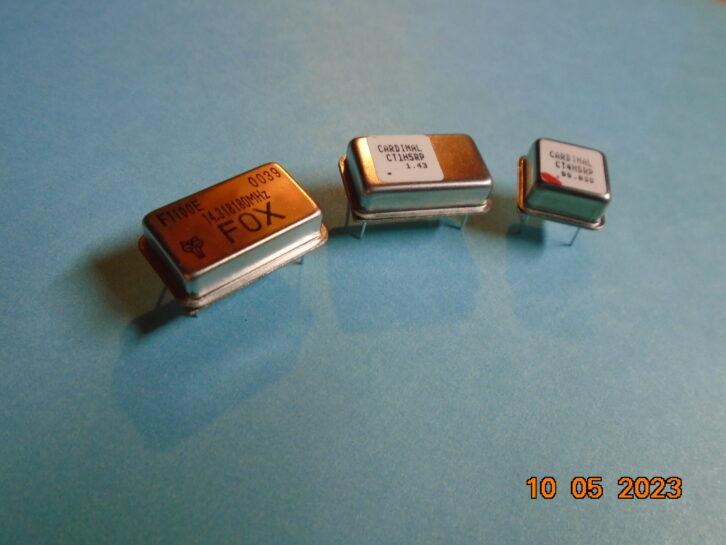
Technology has moved forward, and modern-day crystals are mass-produced, using all sorts of breeding techniques to avoid the cutting and grinding of yesteryear. Modern devices such as computer-cut oscillators and synthesized frequency generators using VCOs and divider schemes have given us advanced, accurate and cost-effective design tools never imagined by the earliest of our broadcast technocrats.
Do not be fooled and accept no substitutes, as almost all of these derivative concepts start out with a crystal in the device providing the base frequency.
The loaded 1900s ships arriving from Brazil, where most of the classic quartz crystals came from, are long gone replaced by artificially produced, high performance, very exact, stable at all temperature “rocks.”
However, the crystal and the piezoelectric effect, found in that eternal ice, remains an important building block tool after all these years.
The Brothers Curie
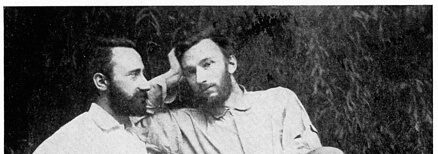
Brothers Jacques and Pierre Curie (pictured) were research colleagues in their nascent days as renaissance-style scientists.
Like the Varian brothers, co-inventors of the klystron, the Curies bounced off one another intellectually. With Pierre leading the way and after considering several other materials, they firmly identified the piezoelectric effect in quartz around 1880 while still in their 20s.
Putting pragmatics before theory, we again come upon one of Buc Fitch’s universal mantras: It’s not what you’ve got but what you do with it that counts. Using their new knowledge, they did do something with it, and shortly invented the piezovoltmeter and a derivative, the piezoelectrometer, which later became the basic instrument used by Pierre and his wife Marie Curie in their second-act work, which led to the discovery of radium.
* In the summer of 1924, the U.S. Navy, in an intense effort to improve fleet communications, consulted two of the leading experts on quartz crystals, Dr. Karl Van Dyke and Walter G. Cady. With their aid, the Navy’s transmitter group built the world’s first high powered (10 kw) crystal-controlled transmitter on 4015 KHz.






